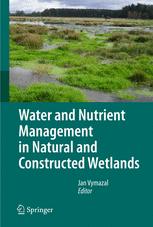

Most ebook files are in PDF format, so you can easily read them using various software such as Foxit Reader or directly on the Google Chrome browser.
Some ebook files are released by publishers in other formats such as .awz, .mobi, .epub, .fb2, etc. You may need to install specific software to read these formats on mobile/PC, such as Calibre.
Please read the tutorial at this link: https://ebookbell.com/faq
We offer FREE conversion to the popular formats you request; however, this may take some time. Therefore, right after payment, please email us, and we will try to provide the service as quickly as possible.
For some exceptional file formats or broken links (if any), please refrain from opening any disputes. Instead, email us first, and we will try to assist within a maximum of 6 hours.
EbookBell Team

4.0
56 reviewsWetlands provide a wide variety of ecosystem services within the landscape and their importance is commonly accepted. Among the most important are regulating services, i.e., benefits obtained from the regulation of ecosystem processes. For example, wetlands contribute to climate regulation. Land cover can affect local temperature and precipitation, wetland ecosystems may affect greenhouse gas sequestration and emissions, or affect the timing and magnitude of runoff and flooding, for example. Wetlands also improve water quality through mechanical, physical, physico-chemical, biological and biochemical processes. These abilities are also used in constructed wetlands but within a more controlled environment. In addition, wetlands provide the supporting services necessary for the production of all other ecosystem services such as soil formation and retention, nutrient cycling, primary production or water cycling. In short, wetlands are clearly among the most valuable ecosystems on Earth. In order to provide these services, wetlands need to be properly evaluated, protected and maintained. This book provides results of the latest research in wetland science around the world. Chapters deal with such topics as the use of constructed wetlands for treatment of various types of wastewater, use of constructed wetlands in agroforestry, wetland hydrology and evapotranspiration, the effect of wetlands on landscape temperature, and chemical properties of wetland soils. This book will be of interest for classes in environmental science, researchers, ecologists, landscape planners and regulators.